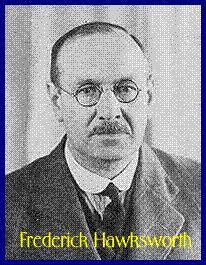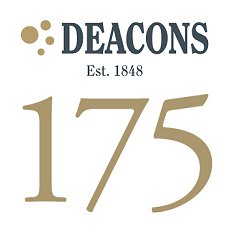Frederick Hawksworth
Swansong from a Swindonian
Frederick Hawksworth, who succeeded Charles Collett as the company's chief mechanical engineer in 1941, had the GWR in his blood. His father was a Swindon Works draughtsman and his grandfather a GWR foreman at Shrewsbury. It was more or less inevitable that he would begin an apprenticeship at Swindon and this happened in 1898. For a period he worked in the testing house but he was destined to follow his father into the drawing office and he began work there in 1905. It was a good time for a young draughtsman to be in the drawing office as George Jackson Churchward, the reigning chief mechanical engineer, was an almost daily visitor and the young Hawksworth soon made an impression. Even so, his progress was slow and steady. It was another 18 years before he rose to become assistant chief draughtsman, but was promoted to the senior post within a further two years. And when William Stanier (later Sir William) left to join the LMS in 1932, Hawksworth became Collett's assistant. He had to wait another nine years before he became the top man and by then he was 57-years-old.
Like Collett, Hawksworth was a Churchward man in terms of locomotive design and it must have been frustrating for him to find himself as chief mechanical engineer at the worst time in the company's history. While all of his predecessors had faced difficult times and won through, Hawksworth's task of developing still further the GWR's reputation for excellence and efficiency was to prove impossible. He had taken over in wartime and with the Works heavily committed to the war effort, his options were limited. The post-War depression proved just as difficult because of lack of supplies and with nationalisation looming following Labour's landslide victory in the General Election of 1945, he could find little outlet for his own innovative skills. "Hawksworth was obviously keen to produce engines to his own design," notes Alan S Peck, the most eminent historian of Swindon Works, "but war conditions limited his ambition." At first he was restricted to modifications of Collett's Hall class, and he had already been in office for four years before one of his own designs was translated into a real locomotive.
Even this was tempered with disappointment because Hawksworth was keen to build a Pacific class to mirror Churchward's Great Bear of nearly 40 years earlier. But such an engine would have been incapable of pulling mixed (ie goods and passenger) traffic and in the economic climate was out of the question.
Instead he introduced his County class, which coincided almost exactly with the end of hostilities. They proved especially popular with drivers who liked their 'punch' on particularly steep or curved sections. To the observer, the Counties were possibly even more elegant in their design than the great engines of Churchward and Collett.
Hawksworth, however, was fighting a losing battle. There was disappointment in Swindon that when nationalisation came, in 1947, the new British Railways Board looked to the LMS for its senior engineers. Hawksworth remained as chief mechanical engineer of the Western Region for a further two years, but retired in 1949, having held the reins of power for just eight years. With Hawksworth went the post of chief mechanical engineer - a position which had served the GWR well for over a century and produced leaders of the highest calibre. In their place, separate mechanical and engineering, carriage and wagon, and motive power departments were formed to spread the work. The last steam locomotive would roll off the Swindon production line just over a decade later.
It was the end of an era.
• Sadly, none of the County class locomotives as designed by Hawksworth have been preserved, but several examples of the 'Modified Hall' class have survived. • The last express locomotive produced by the GWR at Swindon (ie before nationalisation) was a Castle class, originally named Ogmore Castle but soon renamed Great Western, commemorating the passing of the old company but also resurrecting the name that was given to the first engine wholly built at Swindon, back in 1846. • Hawksworth's name is recalled in Swindon today in an industrial estate which was founded in the mid-1970s, appropriately within sight of both the railway line and the Works. • Young Frederick Hawksworth attended Sanford Street School, but it was during the holidays that he first encountered steam. His grandfather, a GWR foreman in Shrewsbury, owned a steam launch. • As a young draughtsman at Swindon Works, Hawksworth worked on frame designs for The Great Bear, Churchward's prestigious (though one-off) Pacific class locomotive, which was built in 1908. • Hawksworth was the fourth consecutive chief mechanical engineer to become a JP in Swindon. However, unlike Collett, who was given the CBE for his services to the First World War effort, Hawksworth received no recognition of his part in the Works' military work during the Second World War. |
|
||||||||
|
||||||||
|
||||||||
|
||||||||
|
||||||||
|
||||||||
|
||||||||


















